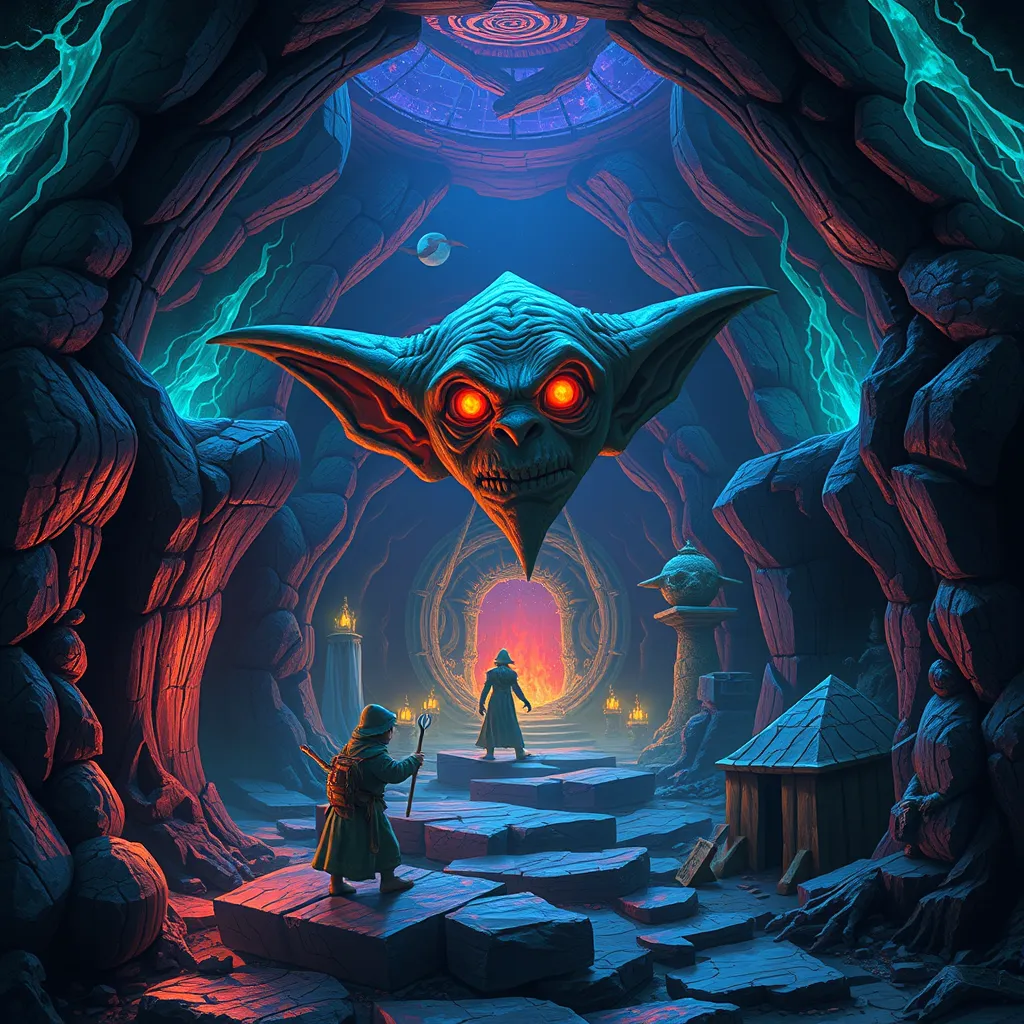The Goblin’s Guide to the Underworld: Exploring Goblin Connections to the Afterlife
I. Introduction
Goblins have long been a staple of folklore and mythology, captivating the imagination with their mischievous antics and otherworldly connections. These creatures, often depicted as small, cunning beings, are found in various cultures around the globe, each with its unique take on their characteristics and behaviors. In many traditions, the underworld serves as a significant realm, representing death, the afterlife, and spiritual journeys. This article aims to explore the intriguing connections between goblins and the underworld, shedding light on their roles in guiding souls and their influence on cultural beliefs regarding mortality.
II. Goblin Mythology: Origins and Characteristics
The origins of goblin lore can be traced back to ancient folklore, with roots in European traditions, particularly in Germanic and Celtic myths. These creatures have evolved over centuries, taking various forms and embodying different characteristics. Common traits of goblins include:
- Small stature
- Mischievous or malevolent behavior
- Ability to shape-shift or cast illusions
- Association with the earth, caves, and hidden places
Across cultures, variations of goblins exist, such as the kobold in German folklore, the chaneques in Mexican mythology, and the troll in Scandinavian tales. Each of these beings possesses unique traits and stories, yet they often share a common thread of connection to the supernatural and the afterlife.
III. The Underworld in Goblin Folklore
The underworld, often depicted as a dark and mysterious realm, plays a pivotal role in goblin folklore. In many stories, the goblin’s underworld is portrayed as a labyrinthine network of caves, filled with treasures, lost souls, and spectral creatures. This underworld serves as a metaphor for:
- The unknown aspects of death
- The journey of the soul after death
- The duality of life and death
Compared to other mythological underworlds—such as Hades in Greek mythology or Hel in Norse beliefs—the goblin’s underworld often emphasizes the trickster aspect of these creatures. It is a place where souls may need to navigate through deception and challenges, reflecting the complexities of human mortality.
IV. Goblins as Guides to the Afterlife
In various cultures, goblins have been depicted as guides for souls transitioning to the afterlife. Their role is multifaceted, often embodying both a protector and a trickster. Tales of goblins leading the departed to their final resting places are common, illustrating their significance in spiritual beliefs.
Some notable stories include:
- The tale of a goblin guiding a lost traveler through a dark forest to the gates of the underworld.
- Legends of goblins helping the souls of the unburied find peace.
- Stories of goblins challenging the souls of the wicked, testing their worthiness for the afterlife.
The significance of these goblin guides lies in their representation of the unknown, serving as both helpers and obstacles in the journey of the soul.
V. Goblin Rituals and Practices Related to Death
Goblin folklore is rich with rituals and customs related to death and the afterlife. Traditional funerary practices often include:
- Burial sites marked with offerings to appease goblins and ensure safe passage for the departed.
- Rituals performed to ward off mischievous goblins that may disrupt the peace of the dead.
- Celebratory feasts that honor both the deceased and the goblins, acknowledging their role in the afterlife.
These practices have influenced local cultures, blending human customs with goblin lore, creating a unique tapestry of beliefs surrounding death and the afterlife.
VI. The Intersection of Goblins and Human Mortality
The interactions between goblins and human souls often reflect deeper themes of mortality and the human experience. Legends abound of goblins haunting the living, sometimes as vengeful spirits or playful tricksters. This duality highlights the complexity of goblins as:
- Helpers who guide souls to the afterlife.
- Tricksters who may mislead or challenge the living.
Such stories invite reflection on the nature of death and the afterlife, emphasizing the lessons learned from the interactions between goblins and humans.
VII. Modern Interpretations and Representations of Goblins
In contemporary literature and media, goblins continue to be a popular subject, often reimagined in various ways. Modern interpretations have shifted, showcasing goblins as:
- Antagonists in fantasy novels and films.
- Comedic characters in animated series.
- Symbolic representations of greed or mischief in urban fantasy.
The evolution of goblin depictions regarding death and the afterlife reflects changing cultural attitudes toward mortality and the supernatural. Today, goblins remain relevant, serving as a bridge between the ancient and the modern, inviting audiences to explore the complexities of life, death, and the beyond.
VIII. Conclusion
In summary, the connections between goblins and the underworld are rich and varied, encompassing a wide range of cultural beliefs and practices. From their roles as guides to the afterlife to their impact on funerary customs, goblins embody a unique intersection of life and death. The enduring fascination with these creatures speaks to the human desire to understand mortality and the mysteries of the afterlife.
As we reflect on the role of folklore in shaping our understanding of life and death, it becomes clear that goblins, with their mischievous nature and deep connections to the underworld, offer valuable insights into the complexities of the human experience.




